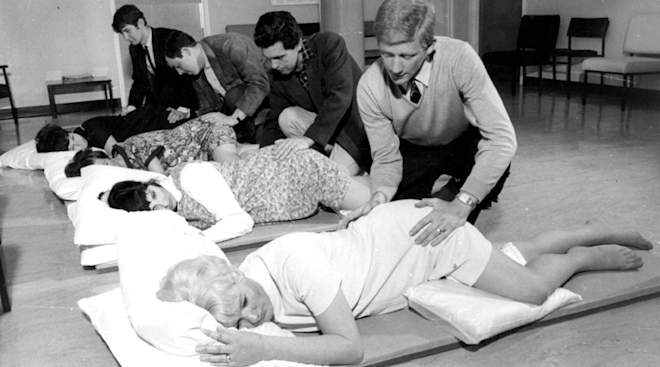More Mothers Are Turning to Laughing Gas for Pain Relief During Labor
The decision of how to manage your pain during childbirth is a complex and personal topic with options running the gamut from getting an epidural to undergoing hypnosis. As moms survey all of their choices, a funny new alternative is catching on—laughing gas.
Nitrous oxide, more commonly known as laughing gas, is a tasteless, odorless gas you’ve likely heard about or encountered at the dentist’s office before. Recommended as one of many pain relief medications by the American College of Obstetricians and Gynecologists (ACOG), laughing gas “reduces anxiety and increases a feeling of well-being so that pain is easier to deal with,” ACOG says on their website.
The use of laughing gas in childbirth dates back to the ‘50s in London and has been commonly used in parts of Europe for many years. In Sweden, laughing gas is used in 70 percent of births and in other counties like Australia and Norway, it’s used in almost half.
The good-feeling gas has gained popularity in America as more mothers look for low-risk options that allow them to have more control over their labor while still providing some pain relief. Unlike an epidural, which inhibits lower body movement and can take a while to place and take effect, laughing gas is inhaled through a mask that the mother holds and provides a calming feeling in as little as 30 seconds.
Plus, this pain relief method is completely safe for baby and passes out of mom’s system in less than a minute after removing the mask—so if it’s not giving the desired effect, clinicians can quickly move on to a new form of pain management.
In an interview with TODAY, Laura Jabbour, a certified nurse midwife at Northwell Health Huntington Hospital, described the feeling her patients get from nitrous oxide. “It doesn’t take the pain away, but it does give you a sense of euphoria that helps with anxiety that a lot of women experience,” Jabbour said. “It takes the edge off.”
A New York mother also described the feeling as the unique pain relief that it does provide, “When you’re actively inhaling the gas, you really let go in the moment and then the relaxation following the contraction…it made it easier to tolerate the next contraction.”
While most people are candidates for using nitrous oxide, some are not. People using drugs or alcohol, those with a vitamin B12 deficiency or those giving birth less than 35 weeks pregnant aren’t great candidates. It’s important to talk with your doctor about whether the treatment is right for you.
When it comes to pain relief during labor, it pays to know your options and have a plan. Explore all of the ACOG approved pain relief medications and prepare your birth plan ahead of time with this easy checklist.
Please note: The Bump and the materials and information it contains are not intended to, and do not constitute, medical or other health advice or diagnosis and should not be used as such. You should always consult with a qualified physician or health professional about your specific circumstances.
Navigate forward to interact with the calendar and select a date. Press the question mark key to get the keyboard shortcuts for changing dates.





















































